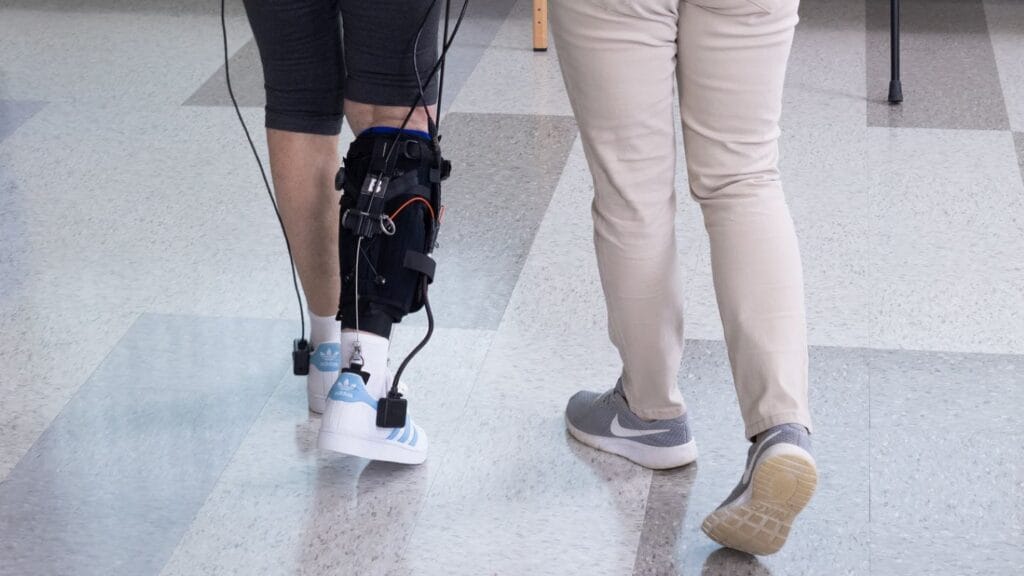
One of the most debilitating symptoms of Parkinson’s sufferers is the loss of control of their gait while walking.
Two technological breakthroughs could help people living with Parkinson’s disease regain this control: Music-based software that helps stabilize the pace of walking, and a wearable robotic exoskeleton that would stabilize a user’s muscle movements.
The findings come from two separate studies out of Boston University’s Center for Neurorehabilitation, but they are not mutually exclusive. Senior living and care providers in the United States may be able to look into multiple options for the hundreds of thousands of long-term care residents in whom Parkinson’s has been diagnosed.
While the music software program is based on a clinically validated technique — rhythmic auditory stimulation — the concept of providing an audio cue to stimulate movement is not necessarily new. The study participants did get shoe sensors to help provide better diagnostic data.
The relatively more innovative wearable robotic exosuit, developed by ReWalk, involves a banded series of cables, motors and sensors that go around a users’ thigh and waist. The device, which augments muscle with mechanical force, was specifically tested to help with the freezing of gait, one of the most common and concerning Parkinson’s symptoms.
Although the study involved just one participant – a 73-year-old male with Parkinson’s – the freezing of gait was “instantaneously eliminated,” according to the researchers, and the tool’s impressive results were demonstrated in a video showing him walking smoothly down a hallway with the device’s assist, compared with stopping and stumbling when it was off.
Several innovations have come out in recent years designed to alleviate various Parkinson’s symptoms or monitor the disease. A wearable wrist device designed to treat hand tremors was released by biomedical company Cala last year.
In addition, although the ReWalk system already is commercially available, other researchers are looking into tools that involve wearable robotics for rehabbing people who have had a stroke, the McKnight’s Tech Daily recently reported.


